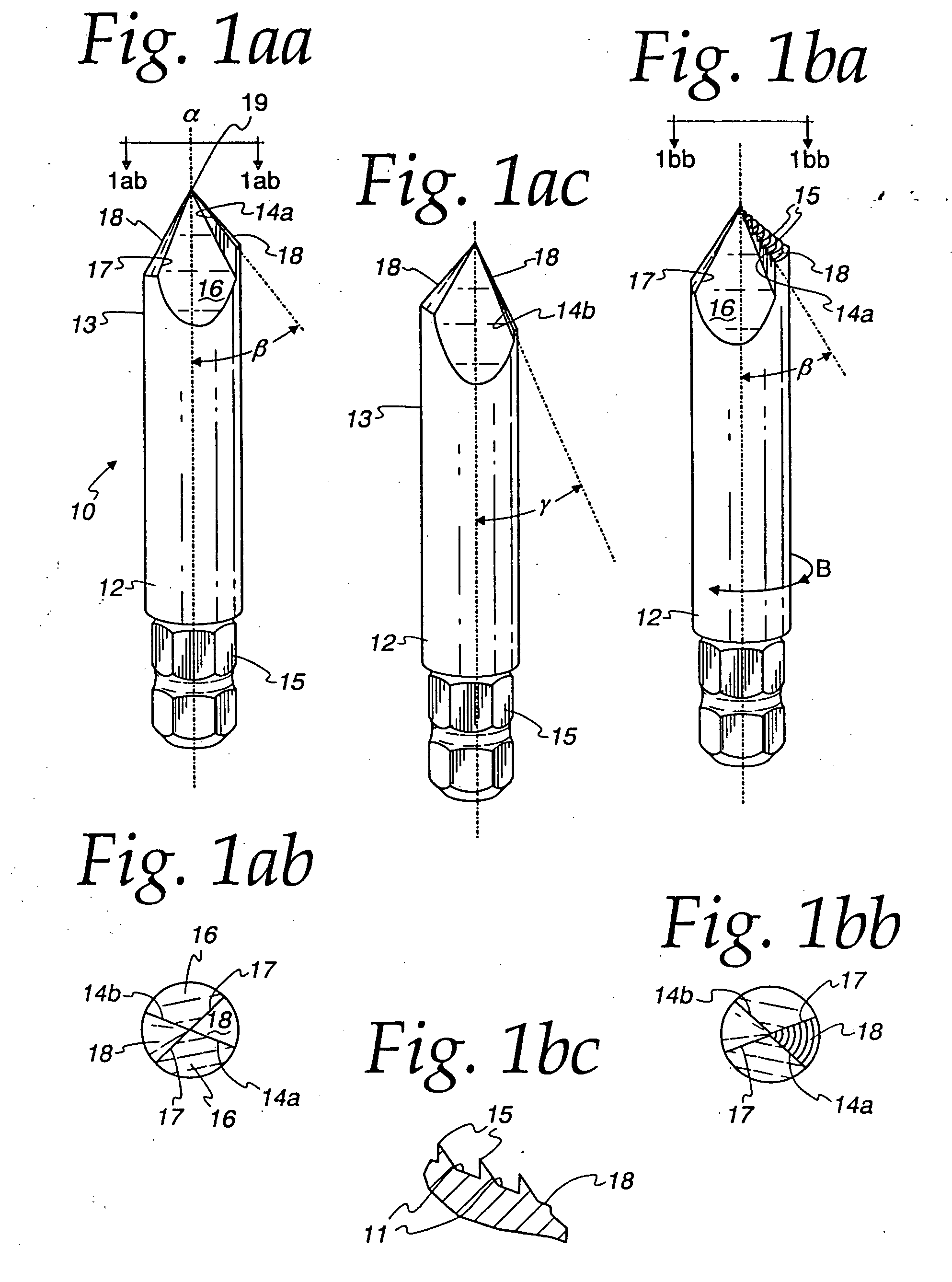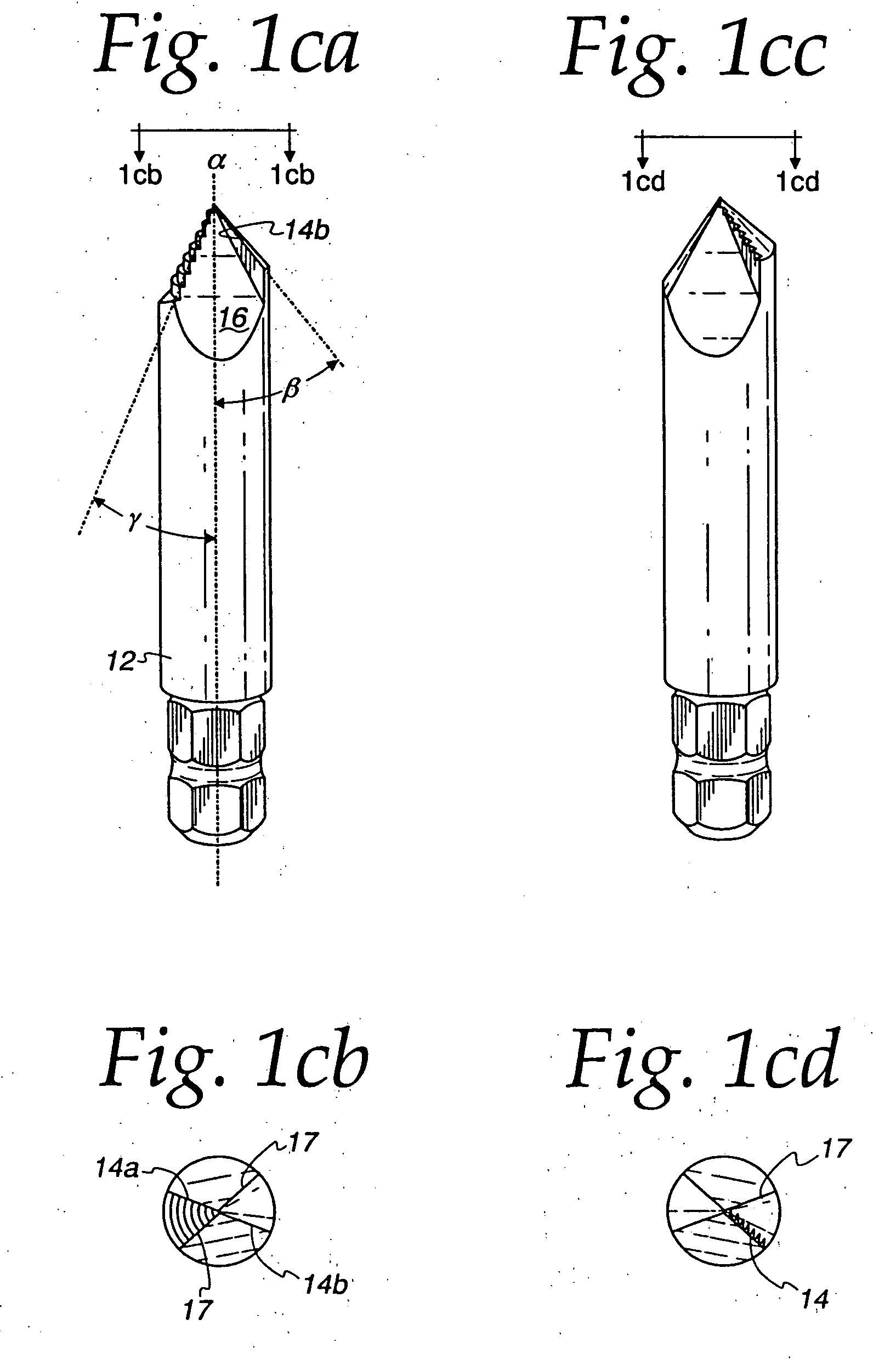Damaged bolt and screw removing devices
a technology of bolt and screw, applied in the field of damaged bolt and screw removal devices, can solve the problems of device not being able to impart the rotational torque necessary, being rounded off, broken, etc., and still requiring considerable power to impart the rotational torque. , the device must be presen
- Summary
- Abstract
- Description
- Claims
- Application Information
AI Technical Summary
Benefits of technology
Problems solved by technology
Method used
Image
Examples
Embodiment Construction
[0043] The present invention provides a bit configuration and various bit / threaded configurations on a single device to allow for easier fastener extraction.
[0044]FIG. 1aa provides salient features of the invented bit, the bit designated generally as numeral 10. As with any typical bit, the bit generally comprises a shaft 12 with a first end 13 terminating in a tip 19. While the tip 19 is depicted as generally pointed, standard split tips also can be utilized such that the cutting surfaces 14 are not coplanarly aligned with each other or with the tip. This split point configuration minimizes and even prevents “walk out” of the bit from the workpiece. As such, the configuration serves as a means for maintaining the bit on the fastener during rotational motion of the bit.
[0045] A second end 15 of the bit is configured to be received by a tool which imparts rotating torque, including but not limited to a chuck, or collet (or some other means for imparting torque). As such, a cross se...
PUM
| Property | Measurement | Unit |
|---|---|---|
| angle | aaaaa | aaaaa |
| angle | aaaaa | aaaaa |
| rotational torque | aaaaa | aaaaa |
Abstract
Description
Claims
Application Information
 Login to View More
Login to View More - R&D
- Intellectual Property
- Life Sciences
- Materials
- Tech Scout
- Unparalleled Data Quality
- Higher Quality Content
- 60% Fewer Hallucinations
Browse by: Latest US Patents, China's latest patents, Technical Efficacy Thesaurus, Application Domain, Technology Topic, Popular Technical Reports.
© 2025 PatSnap. All rights reserved.Legal|Privacy policy|Modern Slavery Act Transparency Statement|Sitemap|About US| Contact US: help@patsnap.com



